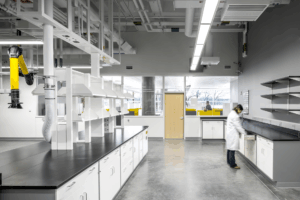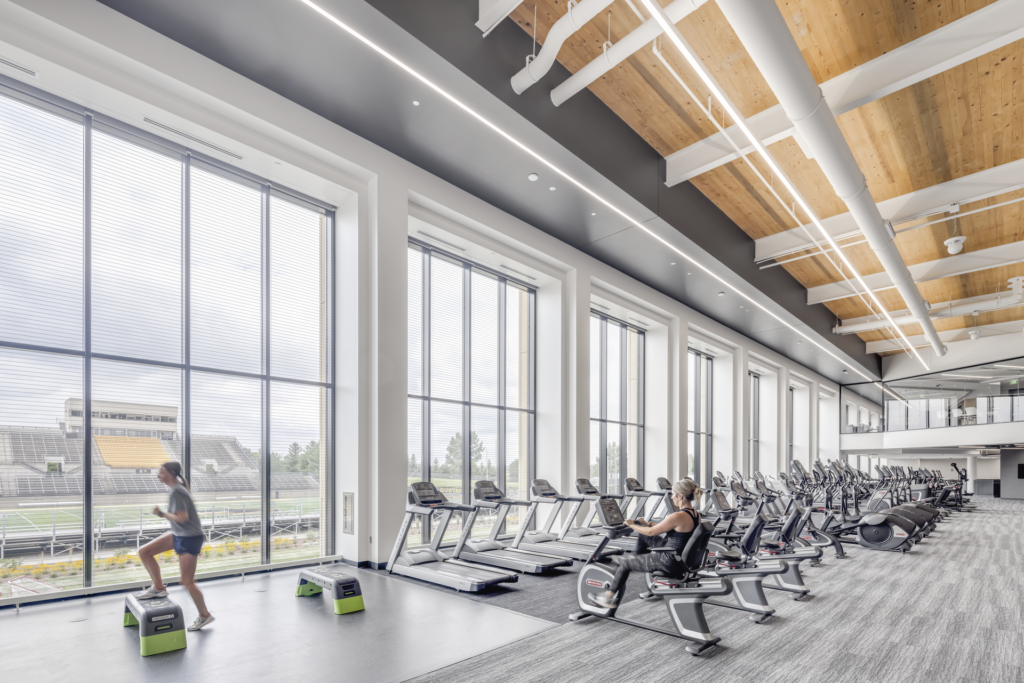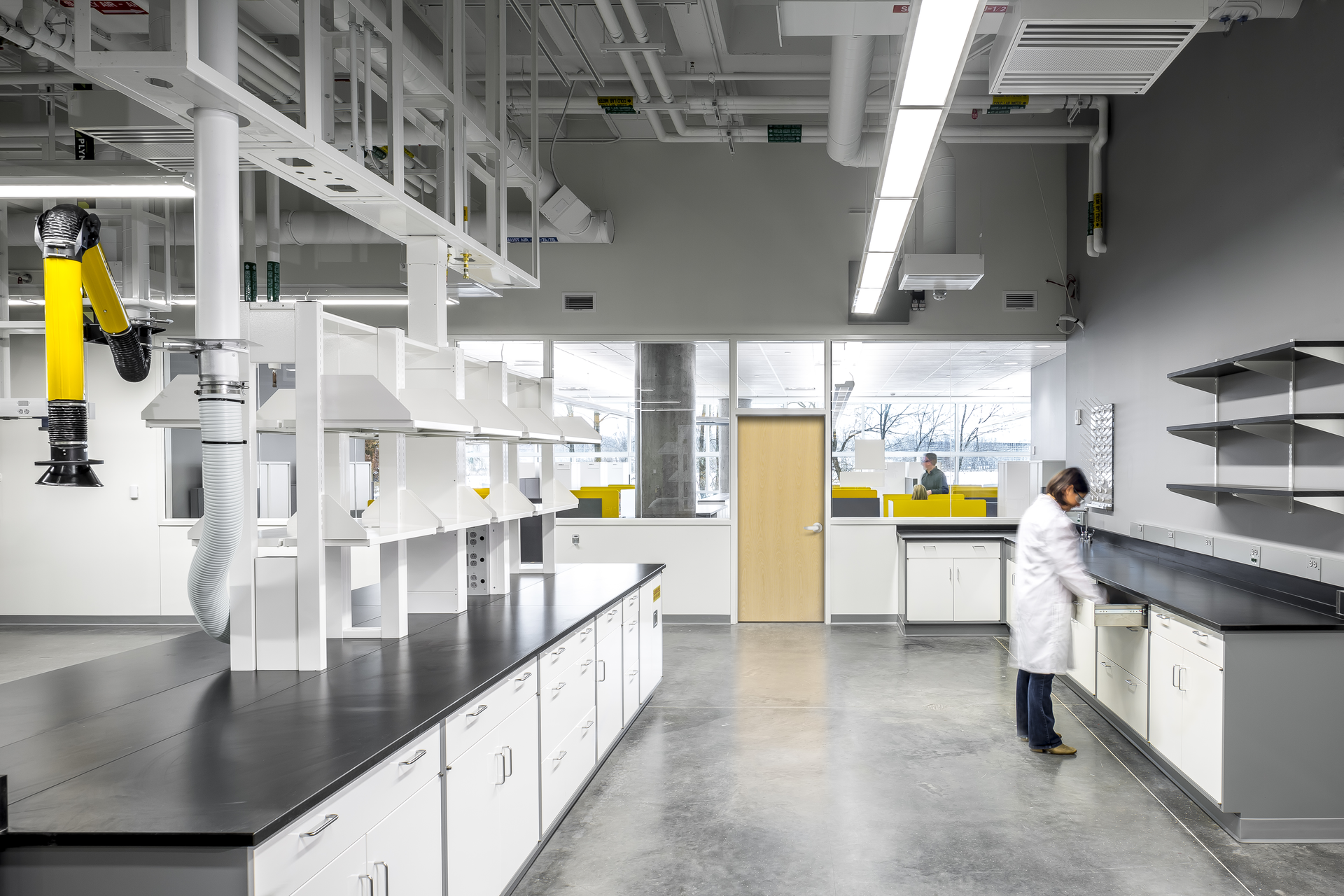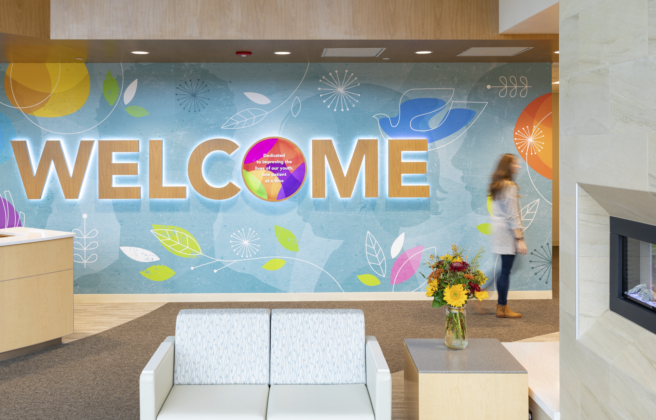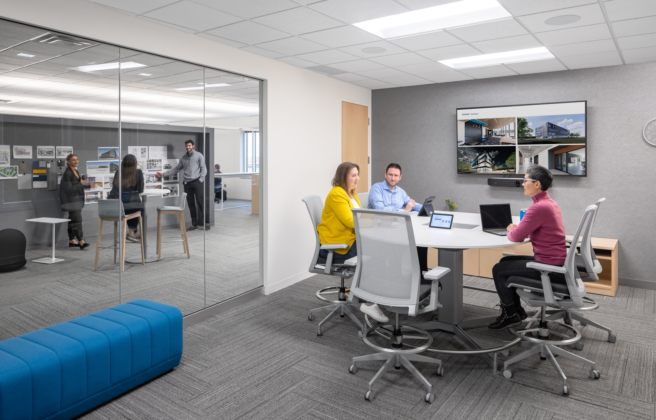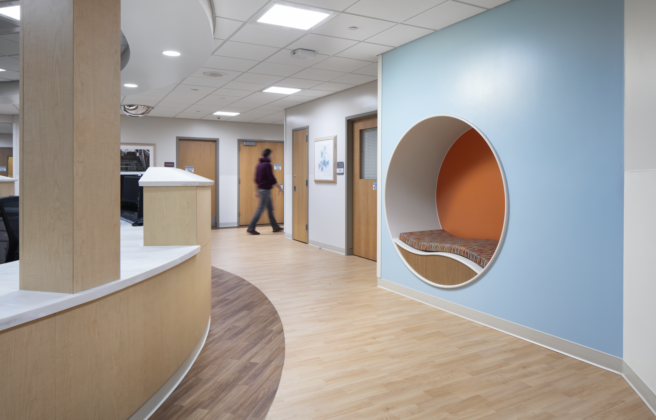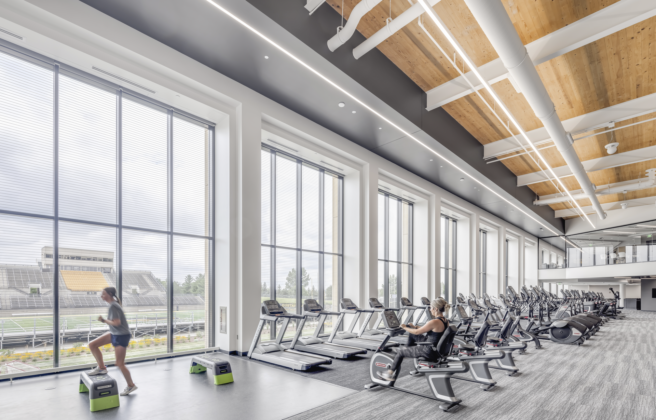Athletic facilities aren’t just about sports anymore. As BWBR’s Architectural Design Manager Kyle Lunke and Principal Craig Peterson discuss in our latest Side of Design episode, these spaces drive enrollment, enhance student wellness, and strengthen institutional identity.
Venues that welcome fans on game day help foster an incredible sense of community and energy—but the benefits go on long after the game clock runs out.
That’s why we were excited to talk with Kyle and Craig to gain insights into how thoughtful design transforms athletic facilities into dynamic hubs serving entire campus communities.
The Recruitment Reality
Most students wouldn’t want to take a step down in the caliber of their athletic facilities when they make the move from high school to university. And yet, high school athletic facilities in a lot of communities look like the average college facilities of not very long ago. As Craig says, “the need to re-envision how these facilities work and look has a lot to do with incoming students having terrific facilities even in their high schools,” which raises expectations for college facilities. And that doesn’t just apply to student-athletes. The general student population also has increased expectations for spaces where they can exercise, play recreational sports, and cheer on their classmates.
Subpar athletic facilities can be a huge barrier for colleges when it comes to student choice. “There really is a direct and notable correlation between athletics and driving greater numbers in enrollment,” Kyle says.
Mental Health Meets Physical Training
Recent shifts in athletic facility design prioritize complete student wellness. “The stigma around mental health has lifted,” Kyle notes, leading to dedicated meditation spaces, recovery zones, and areas “to just chill out for a little bit.”
This holistic approach means thinking bigger picture than just traditional training areas (though those are important too), and thoughtfully including person-centered spaces that may include:
- Study spaces supporting academic success
- Social zones fostering team connections
- Coffee shops creating casual gathering spots
- Wellness resources serving all students
“If you’re able to bring the functionalities that create places of welcoming and an invitation to all students, that can really enhance the overall sense of, ‘this is a building that serves everyone’,” says Craig.
Equity By Design
Title IX compliance shapes every design decision, not only because it’s required but, importantly, because it’s the right thing to do and aligns with BWBR’s values. “We go to great lengths to confirm that women are getting the same opportunities as men,” Kyle says. This means identical square footage, amenities, and even views for equivalent programs.
A great example of this commitment is BWBR’s work on the Athletes Village with a Center for Excellence at the University of Minnesota. This extraordinary facility features shared spaces serving all student-athletes—not just revenue-generating sports. Their dining hall, study areas, and multi-use spaces create an inclusive environment where every athlete belongs.
Technology Transforms Training
As Kyle says, “a trend that just continues to build and build is technology integration. There’s a lot of different tools out there as it relates to virtual reality for both the coaching staff and athletes during practice.”
Successful integration of these tools results in major upgrades for both coaching capabilities and athlete development. Plus, community access and multi-use spaces maximize facility investments while serving broader populations. That makes a single space pay functional dividends for a wide range of applications and an inclusive range of people.
Technology changes rapidly, which means that adaptable spaces are essential. Successful designs meet today’s needs while incorporating flexibility to adapt to future technological evolutions.
Campus Integration that Works
Athletic facilities are a whole different ball game compared to smaller residential or commercial projects. As Craig puts it, “These buildings are really big.” Not only that, but there are also rules and confines that must be adhered to. “These are facilities that are governed by courts and fields of finite dimensions and shapes, so there’s parameters that are well-established. You can’t have a football field that is 120 yards long and 30 yards wide.”
Success requires balancing:
- Campus architectural context
- Visual branding elements
- Efficient flow patterns
- Community connectivity
Athletic facilities do more than house sports programs—they create spaces where students thrive, communities connect, and institutions grow. Through intentional design prioritizing inclusivity, technology, and wellness, these facilities deliver measurable returns on investment for higher education.

